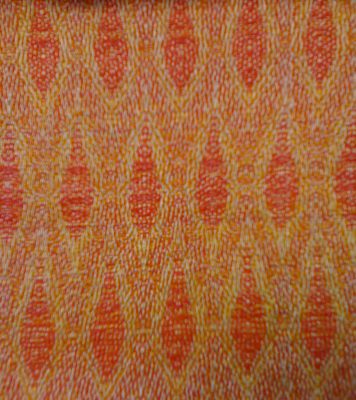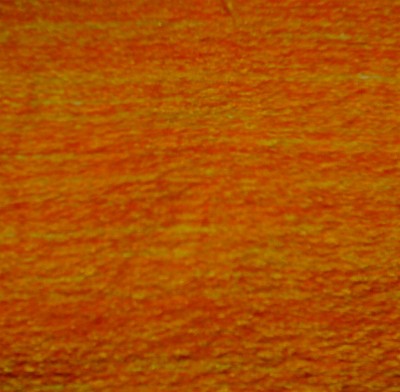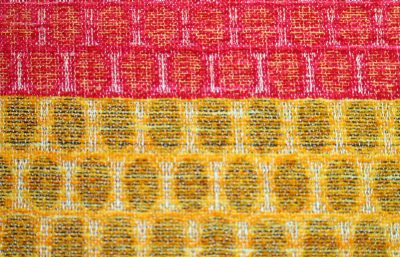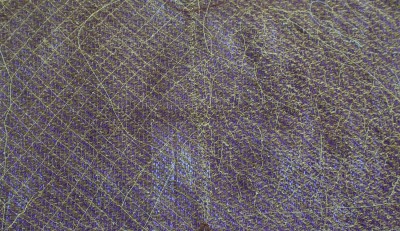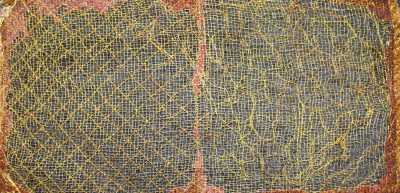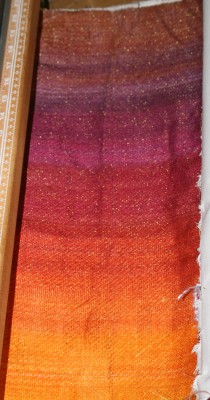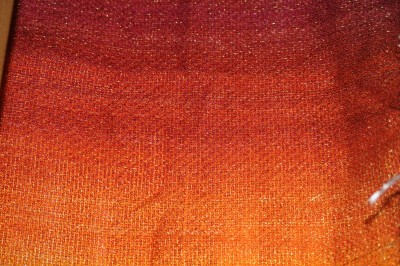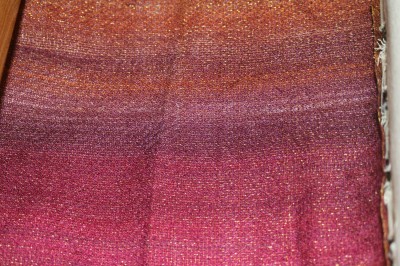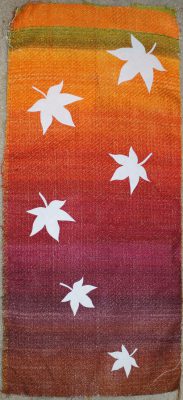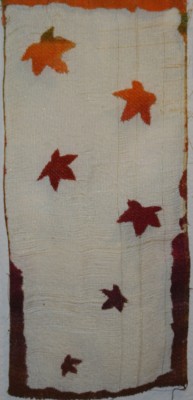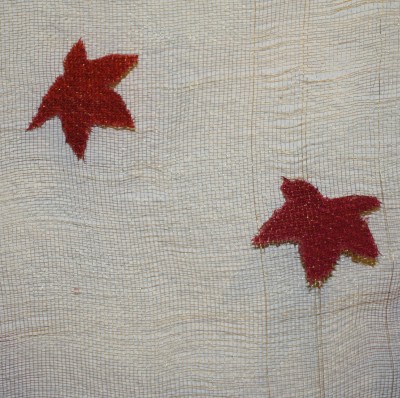Here is the results of my burnout attempts (not very impressive yet, I’m afraid!):
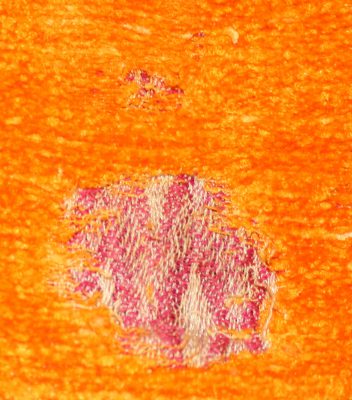
Here I attempted to apply the devore paste from the back, and as you can see, it was less than successful – this was meant to be a circle, but even after much enthusiastic scrubbing the chenille did not come off completely. Either I did not heat it enough for the burnout to happen, or the devore paste did not penetrate the fabric enough to burn out the chenille. Maybe a bit of both.
However, this raggedy sample is still super-valuable as a “proof-of-concept”: the chenille does burn away to reveal the pattern beneath, and the devore paste does not affect the colors (something I was worried about earlier). The rest of it will be a matter of working out how to apply the devore paste, how much thickener to add, etc. And experimenting with shibori and other kinds of bound resist.
My plans for this weekend have mostly been turned upside down by the weather – I had been planning to do a lot of surface design experiments, but it’s forecast to rain all weekend. Rats. It rains so seldom here (especially in this dry winter) that I’m always surprised when it happens – it’s not a bad thing, because we badly need rain this year, but it’s certainly inconvenient for working outdoors.
Instead, my plans are:
- weave more samples for devore, to be burned-out whenever it stops raining
- make more quilt blocks for my class
- finish off entry applications for CNCH and New Fibers 2012
- screen print, cut, and apply my labels
- get back to work on the book
Not a whole lot of excitement for the weekend, but maybe that’s a good thing. The house closes in mid-April, so between mid-April and mid-May (when we move in) there will be an awful lot of packing to do!
